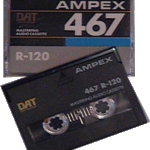Ever since there has been technology around, there have been varied exploiters to harness and improvise on it. This often this leads to the proverbial gladiatorial battles, when one dominant tech slays the ageing and the less fortunate technology. Nowhere is this cutthroat competition more evident than in the high-tech and the media industry.
One aspect of this is the format, which is the standard adopted by a commercial entity or group to differentiate it’s offering from others. One example would be the PAL and NTSC which were analog broadcasting formats adopted by Asia and America respectively. It is important to note that unlike broadcasting or electrical formats (110v, 220v) , where adoption depends on the geography and mandated by the government, competing formats vie for domination and market share in the same industry. A legendary example is the war between the VHS and the Betamax video format. Other examples are so numerous that this post would be way too long to encompass some of the more popular examples and document their triumps and falls. In light of this I will segregate, or at least attempt to; some of the formats for a. Media, b. Computers and c. Telecom and put up separate posts for all
Media Formats:
No other industry has seen the introduction and demise of so many competing formats as the music and the home entertainment industry. The rate of change and adoption is so frantic that music companies and the Motion Picture Industry themselves have been overwhelmed in order to cope up with new formats, mediums and profitability associated with them. Let us look at some of the warring formats which have ruled the roost and have gradually declined owing to obsolence or consumer preference.
AUDIO FORMATS
- Vinyl Records vs Compact Discs : This one is a no brainer. The big 12” analog record could not possibly compete with the technologically superior CD, owing to some fundamental shortcomings. A record was large, unwieldy and was prone to scratches which would induce breaks and distortions in the sound, as the sound was picked up by a metal pin in the player. They could also break easily. Ever since the 90’s the compact disc has held the roost as the defacto standard owing to it’s compact size and durability since the sound in a CD is derived optically, without any sort of physical contact between the pickup mechanism and the media. However all is not lost for the ageing vinyl. They are now treated as collector’s items and are often sought by musical purists, owing to the natural analogue sound they can provide (CD’s are digital). In the realm of ultra premium audio, a top notch record player is still a coveted item, like the $150,000 Clearaudio Statement which weighs in at 80Kilos and has the same transport mechanism as NASA’s Mars rover.
- DAT vs Sony MiniDisc vs Philips DCC : These are some of the lesser known digital audio formats which were around in the 90’s. Both of these short lived formats were originally meant to replace the then ubiquitous analog compact cassette, by providing a superior digital sound and portability.
DAT or Digital Audio Tape was a format pioneered by Sony in the late 80’s. It looked like a smaller version of the standard audio cassette, but the recording /playback system was digital and sampled music at the same rate as CD’s. It never took off in the home market, but did gain acceptance in professional recording uses and later for computer backup purposes.The MiniDisc was slightly more successful in terms of consumer
adoption and was actually quite popular in Japan, Sony’s native place. Philip’s DCC (Digital Compact Cassette) on the other hand was relegated to a few thousand units and could never really make it’s mark. Sony’s MiniDisc was essentially a magneto optical drive, and utilized a compression technique known as ATRAC to fill 74 minutes of audio on a tiny 2.5” disc.
Philips DCC like the DAT was essentially a tape recorder/player which incorporated a digital recording and extraction technique, commonly used in the computer industry for backup purposes. All three formats were quite adept at creating and reproducing crystal clear digital audio just like the Compact Disc. The major reason for all three technically advanced digital formats to fail so spectacularly, is that the music recording industry refused to support either format for fears of digital home recording and piracy. A digital copy creates an identical replica of the original, unlike analog transfers. Ironically the music industry’s paranoia about this would come back to haunt them in the guise of cheap CD recorders , the MP3 format and the Internet as a piracy-friendly transfer medium in the noughties.
VIDEO FORMATS …… coming soon…keep your eyes peeled out for the rest of this article




